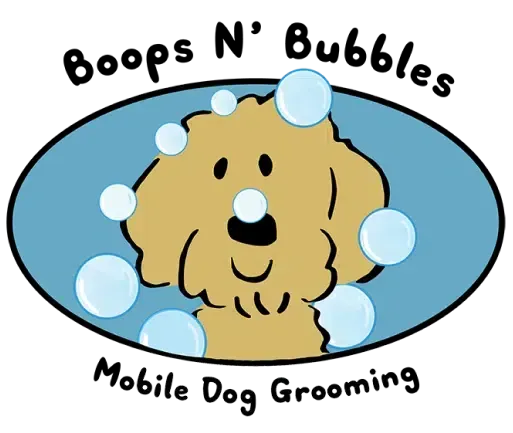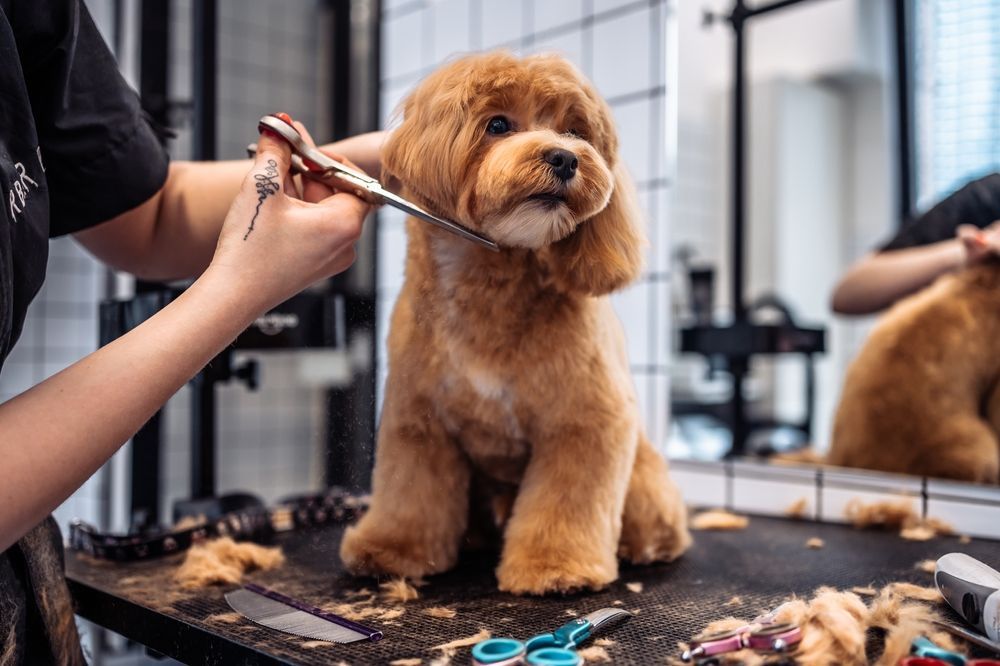How to Remove Dog Tear Stains: Safe and Natural Tips
Those rusty streaks under your dog’s eyes aren’t just “messy fur.” They’re dog tear stains, and they stick because tears leave pigment and keep the hair damp. The result? Stubborn marks, a sour smell, and irritated skin if you leave them alone. If wipes haven’t helped or stains keep coming back, it’s not your fault, tear stains have multiple causes and need a plan, not a one-off scrub.
In this guide, we’ll cover why tear stains on dogs happen, how to clean dog tear stains the gentle way, what to avoid near the eyes, and how to prevent tear stains in dogs for good. Prefer pro help?
Professional dog groomers can trim the eye area safely and set up a routine you can keep at home.
What Are Dog Tear Stains?
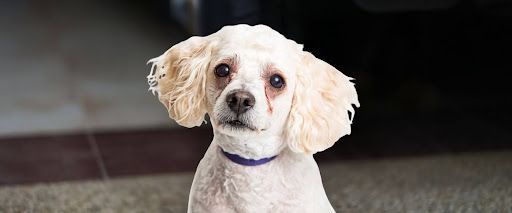
Dog tear stains are reddish-brown marks that form below the inner corners of the eyes. They show most on light coats (think Maltese, Bichon, Poodle), but any dog can get them. Two things drive the discoloration:
- Pigment left by tears and saliva that settles on the hair.
- Constant moisture on the face, which darkens fur and can irritate skin.
Tears themselves aren’t “dirty.” The problem is wet hair that never fully dries.
Why They Happen (And Why They Stick)
Tears end up on the face for two main reasons:
1.Too Many Tears
Triggers include dust, seasonal allergies, wind, smoke, shampoo in the eye, ingrown lashes, eyelid shape issues (like inward-rolling lids), or mild infection. Excess tearing can also lead to
dog eye boogers, which are the dried mix of tears and debris that collect in the corner of the eye.
2.Poor Drainage
Even normal tear volume can overflow if the ducts are narrow, blocked, or if face hair wicks tears down the cheek. Flat-faced breeds and dogs with shallow eye sockets spill tears more easily.
Pro Tip: Cleaning helps the look. Fixing moisture and wicking stops new stains.
Safety First: What Not To Use Near Eyes
- No hydrogen peroxide or bleach. These can burn delicate skin and irritate eyes.
- Skip vinegar on the face. Even diluted, it stings and can inflame skin.
- Avoid harsh “whiteners.” If it tingles on your fingers, it’s too strong for eye fur.
- Don’t self-start antibiotics. Tablets marketed for stains are not beauty tools; medication belongs under a vet’s guidance.
Pro Tip:
If eyes look red, swollen, painful, smelly, or your dog squints/paws at the face, see your vet before home care.
How To Clean Dog Tear Stains (Gentle Routine)
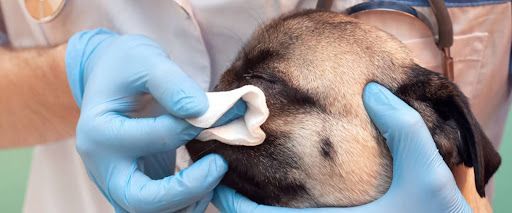
Use this simple process daily for 2–3 weeks. Then shift to maintenance a few times a week.
- Wash your hands: Clean hands, calmer skin.
- Soften the buildup: Hold a warm, damp cotton pad on the stained fur for 10–20 seconds.
- Wipe outward: One fresh pad per eye. Sweep away from the corner to avoid dragging debris back.
- Optional rinse: Use a pet-safe sterile saline eyewash on the hair (not directly into the eye unless the product allows) to lift residue.
- Dry completely: Pat dry. Moisture is what sets stains and irritates skin.
- Protect the hair (not the eyelid): Rub a tiny amount of plain petroleum jelly on the hair just under the inner corner. This creates a slip barrier so tears run off instead of soaking in.
- Comb face furnishings: A small, fine comb keeps hair smooth and less absorbent.
Pro tip: Schedule a tidy trim of the inner eye corners. Even 1–2 mm less hair can cut wicking and speed results.
Natural options vs. store-bought products
Natural / Minimal-Ingredient Choices

- Warm water & saline: Gentle, safe, and effective for daily cleanup.
- Hypoallergenic tear-area wipes: Look for fragrance-free, alcohol-free formulas.
- Barrier on fur: A small dab of petroleum jelly on the hair after cleaning helps repel moisture between wipes.
Store-Bought Helpers (Choose Wisely)
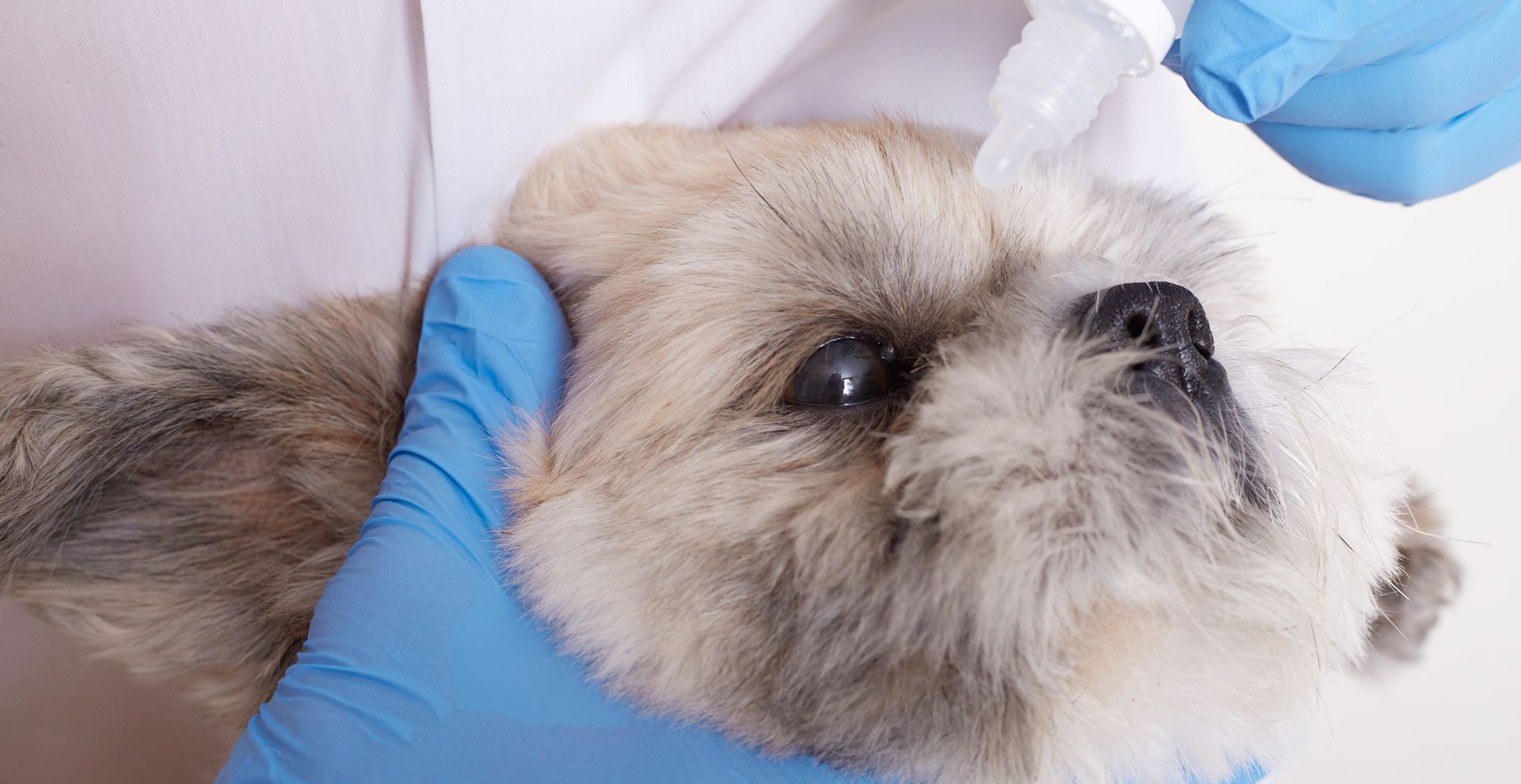
- Tear-stain shampoos/washes: Stick to mild, eye-area-appropriate products. Avoid optical brighteners and heavy fragrance.
- Powders for dryness: Some groomers dust a tiny amount under the eye to keep hair drier; use sparingly and keep powder away from the eye itself.
- Pro tools at the salon: Trimming, safe cleansers, and controlled drying make everything faster and safer.
What about coconut oil? It can act as a light moisture barrier, but it’s runnier than petroleum jelly and can migrate. If you try it, use a pin-head amount on the hair only and never near the lid margin.
What about “home acids” like apple cider vinegar? Not on the face. If you’re considering diet changes or supplements, talk to your vet first.
Step-By-Step: Full Weekly Reset (Deeper Clean)
Do this once or twice a week alongside your daily wipe:
- Bathe just the face: while bathing your dog, use a dog-safe, tear-area-approved cleanser.
- Rinse thoroughly: Residue causes itch and more tearing.
- Blot and blow-dry on cool/low: Keep the dryer moving and at a distance.
- Comb and apply a barrier to hair: A tiny layer under the inner corner helps keep the area dry until your next wipe.
This “reset” prevents the slow creep of pigment and keeps skin happy.
Daily Habits That Prevent Tear Stains In Dogs
- Trim the eye area regularly: Less hair = less wicking. Ask a pro to do it safely.
- Switch to stainless-steel bowls:
They’re easier to sanitize than plastic.
- Offer filtered water: Lower mineral content can help reduce deposits on fur.
- Wipe after meals and drinks: A quick pat keeps the face dry.
- Feed a balanced, high-quality diet: Addressing sensitivities can reduce tearing in some dogs.
- Keep irritants away: Avoid spraying perfume, cleaners, or dry shampoo near the face.
When To See The Vet
Book a visit if you notice any of these:
- Sudden tearing and staining in a dog who never stained before
- Redness, swelling, odor, or thick yellow/green discharge
- Squinting, pawing at the eye, or rubbing the face on furniture
- Skin rashes or sores under the eyes
- No improvement after 2–3 weeks of good home care
Pro Tip: Your vet can check for inward-rolling lids, extra lashes, blocked tear ducts, corneal irritation, or infection. Treating the cause slows new stains better than any wipe.
Professional Grooming Help
A skilled groomer makes tear-stain care safer and faster:
- Precision trim of the inner eye corners so hair doesn’t wick tears
- Gentle cleansers that are designed for peri-ocular fur
- Drying and combing that keeps hair smooth and less absorbent
- A simple home plan made to your dog’s coat and face shape
Troubleshooting: why stains keep returning
- You clean but don’t dry: Damp hair remains fast.
- Hair is too long: Even clean tears will travel if there’s a “tear track.”
- Face products are too harsh: Irritation triggers more tears.
- The root cause persists: Allergies, lashes, or duct issues keep the area wet.
Tweak one variable at a time so you can see what actually helps.
Conclusion: prevent tear stains dogs
You can lighten stains and slow new ones with a simple, repeatable plan: soften and wipe daily, rinse with a gentle eyewash if needed, dry completely, and protect the hair with a tiny moisture barrier. To keep your
dog coat clean and shiny, pair that routine with smart trims and a check for underlying issues, and those dark tracks fade while your dog stays comfortable.
Want a faster start and safer trims?
Book a tear-stain clean-up with our grooming team, we’ll set your dog up with a calm routine you can keep between visits.
FAQs About How To Clean Dog Tear Stains
How to remove dog tear stains naturally at home?
Use warm, damp pads to soften buildup, wipe outward, optionally rinse the hair with a pet-safe saline eyewash, dry fully, then place a tiny bit of petroleum jelly on the hair below the inner corner to repel moisture. Keep the area neatly trimmed.
Does coconut oil remove dog tear stains?
It can act as a light barrier, but it spreads more than petroleum jelly. If you use it, apply a pin-head amount to the hair only and keep it away from the lid and eye. Results depend on how well you manage moisture overall.
What is the best eye stain remover for dogs?
Start simple: warm water, hypoallergenic tear-area wipes, and a sterile saline eyewash for the fur. Choose mild, unscented products made for dogs and avoid peroxide or harsh brighteners near the eyes.
Can you fix tear stains on dogs?
Yes, clean and dry the area daily, trim wicking hair, and address the cause (allergies, lashes, duct issues) with your vet. That combination fades existing stains and slows new ones.
Is vaseline good for dog tear stains?
Used correctly on the hair under the inner corner, a tiny amount helps tears roll off instead of soaking in. Never place it on the eyelid margin or in the eye.
Are tear stains harmful to dogs?
The color is mostly cosmetic, but constant moisture can irritate skin and sometimes points to an eye problem. If there’s redness, odor, pain, or sudden change, ask your vet to check the eyes and tear ducts.
